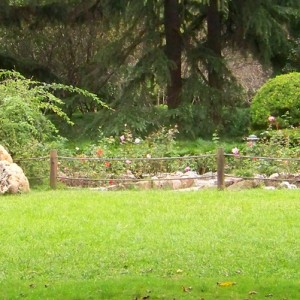 (Stephen used to play Magic The Gathering during lunch in Jr High School)
(Stephen used to play Magic The Gathering during lunch in Jr High School)
Since there are so many options and moving a garden isn’t necessarily easy, choosing a place for your garden can be intimidating. The two biggest concerns when deciding where to put your garden are the amount of sunlight and the quality of the soil.
In the Sun
Most plants prefer lots of sunlight. Pick a spot in your yard that gets at least 6 to 8 hours of sun. Some plants like tomatoes need 10 or more hours of sun. Pay attention to how the shade from walls, buildings and trees move across your yard throughout the day. Remember that the sun is lower in the sky in winter and higher in the summer, so winter shade will be different from summer shade. If you find that you don’t have enough sun, check out this article about planting in shady spots(coming soon).
In Good Soil
Vegetables prefer loamy well-drained soil. I know, you must be asking yourself, “What is loamy?” Before I started gardening, I had never heard of it either. It basically means that the soil has the correct balance of sand, silt, clay and humus (organic matter).
The good news is that if your soil isn’t the best, it can usually be improved. However, be conscience of what the land was previously used for. You don’t want to plant your garden on a waste dump or in contaminated soil.
Although sun and soil should be your initial determining factors, here is a list of other things to consider before picking a spot:
- Avoid planting too close to a tree, because it will steal nutrients from the plants and shade the garden.
- Make sure the garden is away from high traffic areas. You don’t want it trampled by dogs, run over by cars or have a basket ball crushing the plants.
- If you live in a hilly area keep in mind that valleys gather cold air. This can work to your advantage or disadvantage depending on your climate.
- Planting close to your house will help to discourage wild animals from attacking your garden.
- Make sure you have access to water. Gardens need plenty of water.
- Make sure you have enough space. Most plants take up at least a 3 foot radius. Some, like pumpkins, take more.
- How level is the area? Level ground is important for proper water absorption and erosion prevention.
- Plant fruit and nut trees North of your garden, so they don’t shade your garden. (More on trees here.)
Anything I missed? Leave your tips below in the comments.
References
http://www.mastergardeners.org/publications/plantingYourVegGarden.html
http://www.organicgardening.com/learn-and-grow/secrets-tomato-growing-success
http://www.youtube.com/watch?v=dGaAFqWuReA
http://www.bhg.com/gardening/vegetable/vegetables/planning-your-first-vegetable-garden/


